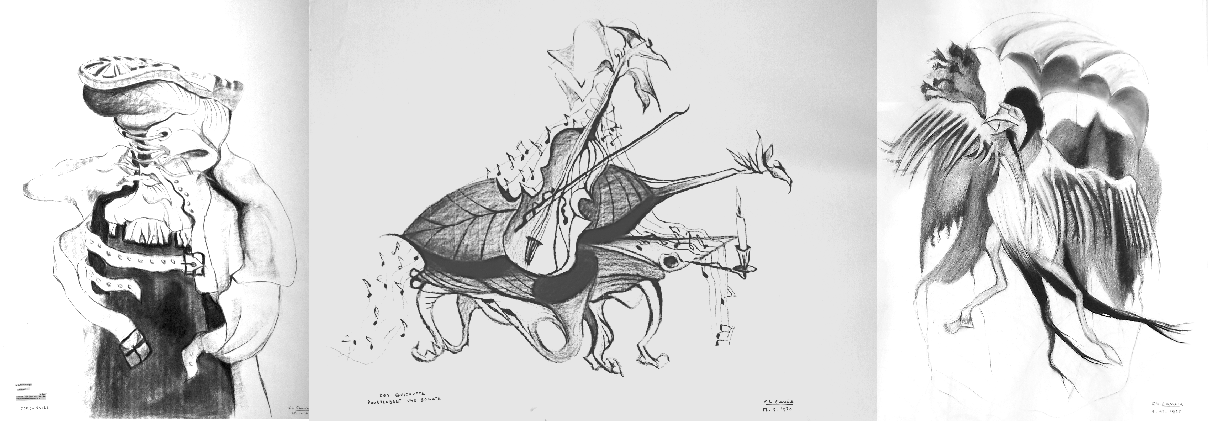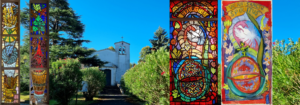FOCUS: It all starts with a whimsical drawing!
The encounter
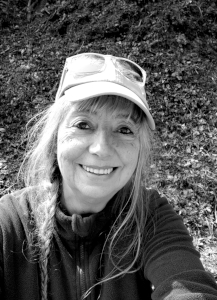
It was on 16 May 2017 that I met Charles Carrère at the Musée Basque et de l’histoire de Bayonne. I am a press correspondent for a local newspaper and I am covering the event of the signing of the agreement formalising the deposit in the museum of a mosaic belonging to the Aviron Bayonnais made in 1949 by Jean Lesquibe. Charles Carrère had supervised the restoration, which was carried out by Jean-François Perry.
I arrived early and went upstairs to photograph the work. Then an old man sitting at the entrance to the room called out to me and asked who I was. We chat and I learn that his name is Charles Carrère and that he was Jean Lesquibe’s apprentice. He asks me where I come from because he has spotted a Belgian phrase in one of my sentences. I replied that I had just returned from Réunion but that I was of Belgian origin. He then invited me to come and see his workshop to show me photos of the stained glass windows he had made in Reunion. It was only later that I understood that it was my Belgian origin that interested him most.
First time visit
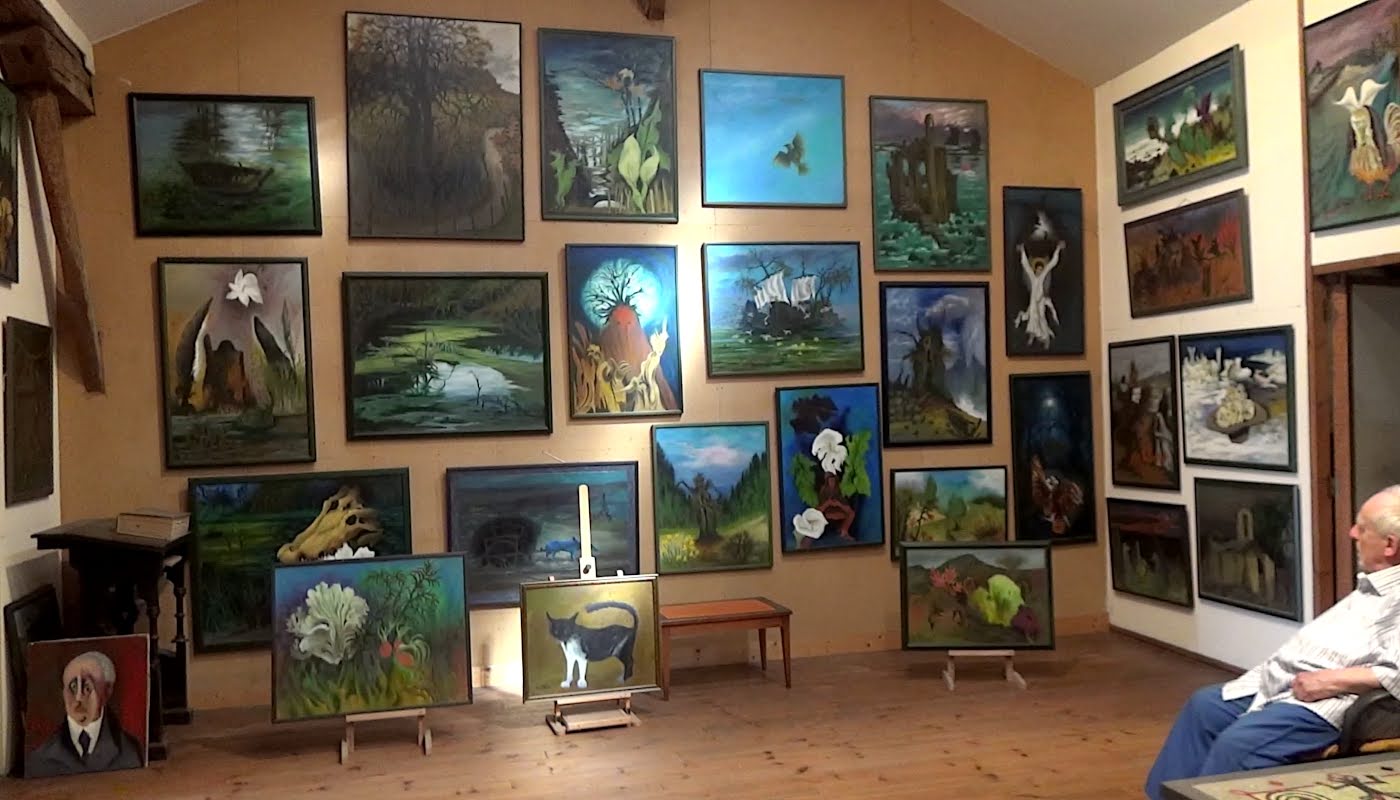
I promised, so I go. So I go to the artist’s house, wondering what I am going to discover. Charles Carrère doesn’t give me time to contemplate the strange paintings I see on the wall, some of which catch my eye because I recognise typically Reunionese vegetation. He takes me to the other studio, the one where he paints, makes me sit down and asks me to wait for him as he disappears into a small room at the back of the studio. He returns with a large green cardboard box, opens it and reveals a charcoal drawing punctuated by a “Voilà” and then shuts up and watches me….
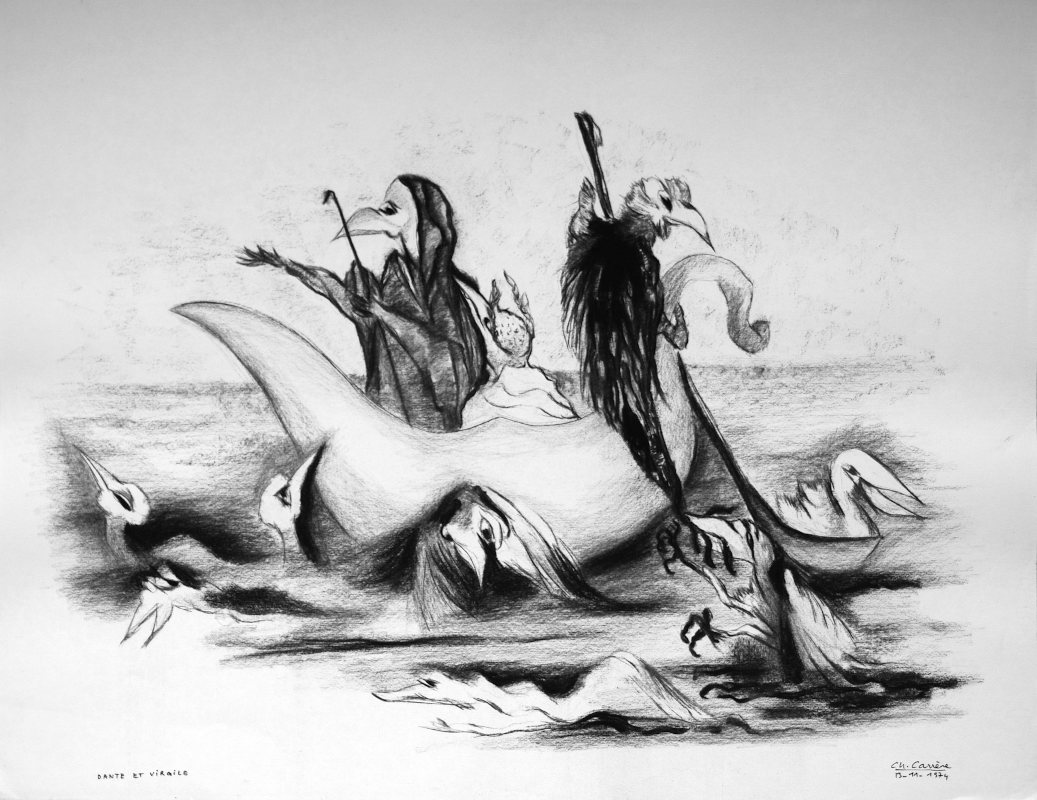
From the first glance, I internally salute the good drawer and then I lean over to read the title of the work. Dante and Virgil… and there, it jumps out at me, it’s the hell they’re going through in a hopper… I burst out laughing. He remains impassive and observes me… I say to him: “But you are completely surreal, Mr. Carrère”! Then his eyes light up… And I finish: “Your comedy with a sauce boat is divine”! Finally I win the outline of a smile that reassures me.
He explains to me that the gravy boat that served as a model is his grandmother’s, which he still uses. We discuss and talk about “The Divine Comedy”, whose author is Dante. To summarise the story, Virgil leads Dante through hell and purgatory to save his soul. Dante is then guided by Beatrice, his muse, to heaven. This interpretation of the Divine Comedy drawn by Charles Carrère totally seduces me. He then shows me another drawing entitled “Vladimir and Estragon”, tells me that the tree stump is Godot and that these two characters are waiting for Godot. And then he pretends not to remember the name of the author of the play. I’m lucky because I know the answer: it’s Samuel Beckett. And that’s it, with that answer I passed my ‘entrance exam’. And we talk about Belgium, about the Belgian love of surrealism.
Regular appointments
This is when our long meetings begin, which will last until his death in February 2021 and during which he will accept the presence of my camera. We will talk very seriously about the stained glass windows of course, but also about the mosaics and all his work as an artist. Below is an example of the result of our meetings with the video of the caprice “Vladimir and Estragon” and the succulent comments of Charles Carrère:
Charles Carrère tells me about his town Anglet and the exhibitions that have been devoted to it. And then he explains to me that he has made donations to the Bayonne Museum: stained glass windows, mosaics and various documents, and that he would like his whims to be included. I tell him about my idea of creating videos like this one and I tell him that it would be nice for the public to be able to enjoy his whims. He tells me about the arrival of a new curator for the Bayonne Museum and invites me to attend a meeting of the “Friends of the Basque Museum” with him because he knows that Sabine Cazenave, the new curator, will be there.
One appointment and everything speeds up
And indeed, Sabine Cazenave was there, she immediately noticed Charles Carrère, came to greet him and when he introduced himself let him know that she had already taken note of his donations to the museum. Charles Carrère was pleasantly surprised but interrupted him and said, “It’s not about me, I would like you to make an appointment with Madame Cailliau so that she can present her projects to you. A few days later, I met Sabine Cazenave, I showed her my work on Charles Carrère and everything followed… And I took Sabine Cazenave to meet Charles Carrère at his home in Bellite.
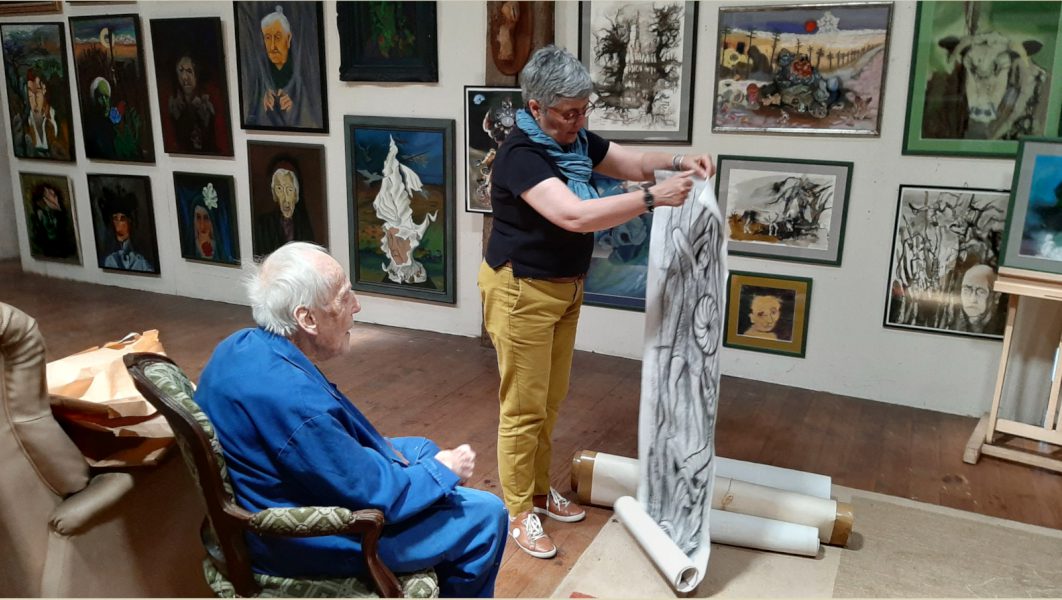
I will take her there several times, to the great joy of Charles Carrère.
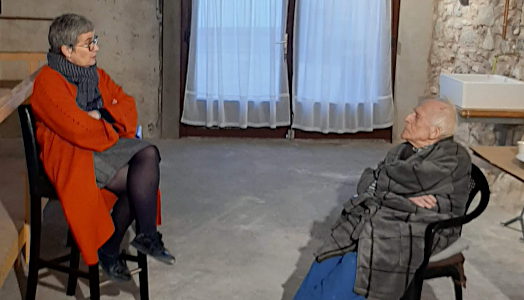
The project and the idea of the title “Les Caprices de Charles” were born in the mind of Sabine Cazenave, who suggested this name, which delighted the artist. I will be able to work with her, I will learn a lot from her and I am very grateful to her.
A very sad news…
On 9 February 2021, Charles Carrère left us. Sabine Cazenave and I are saddened by his departure and sorry that he will not be able to see his exhibition scheduled for November 4, 2021.
The exhibition is a success
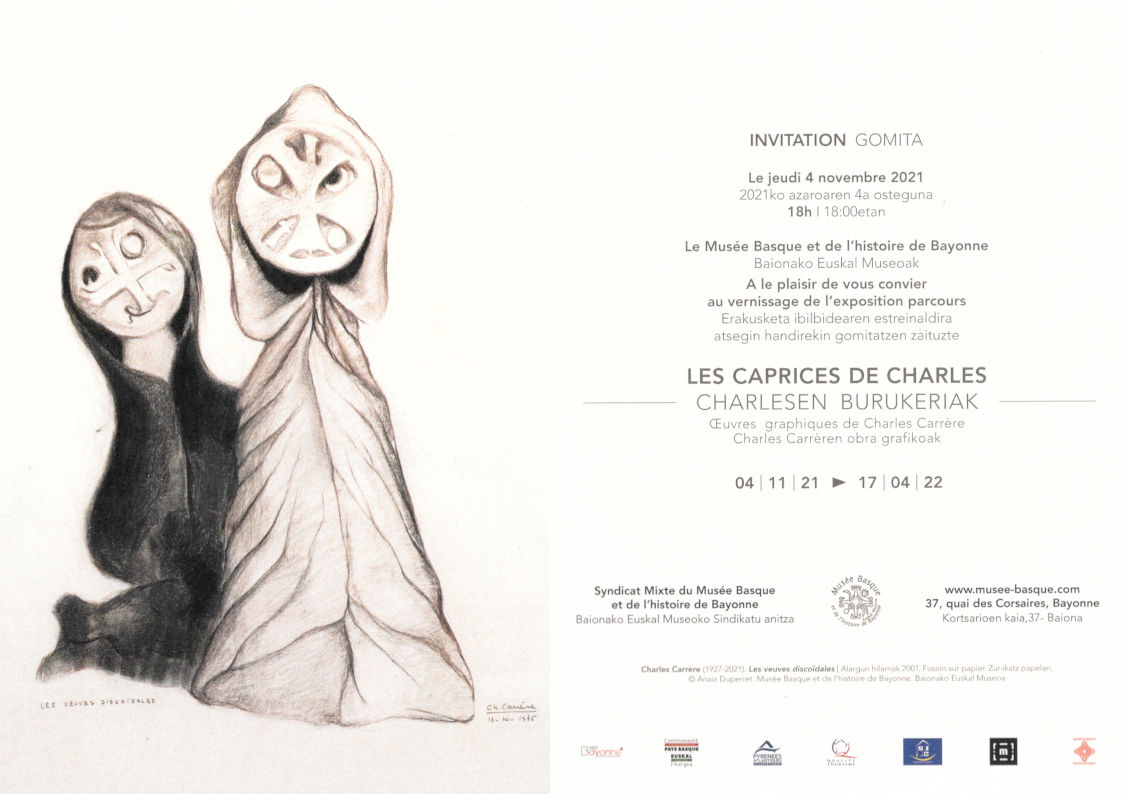
Charles Carrère really liked Sabine Cazenave’s idea of installing her whims in American frame boxes
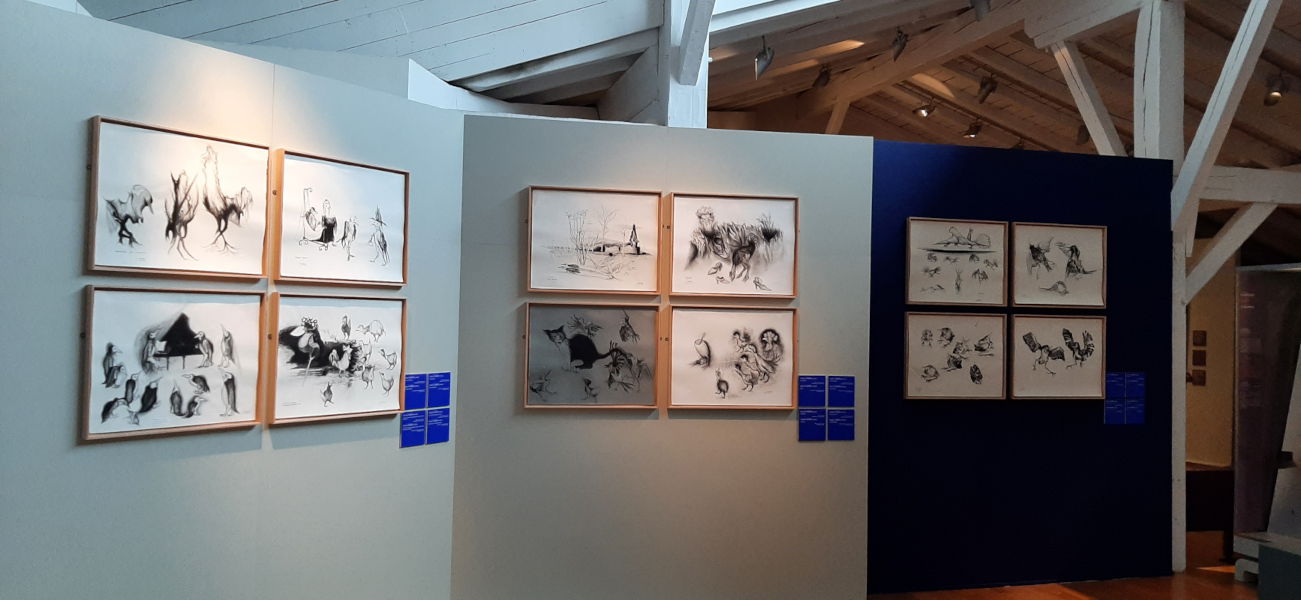
The videos of the caprices are viewed on the tablets installed under the original caprices. A sign explains that Charles Carrère is not someone to be directed even for a filming on his works!
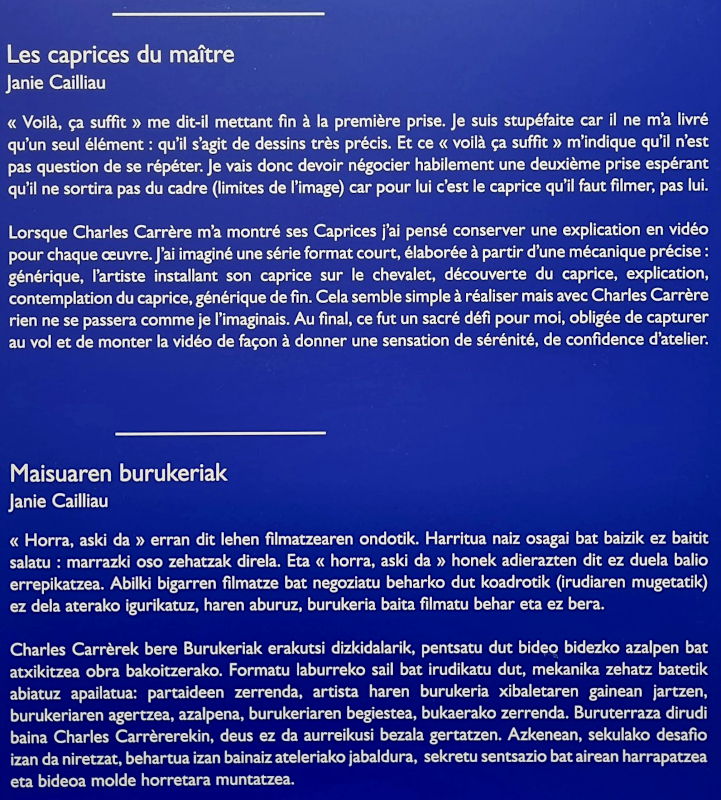
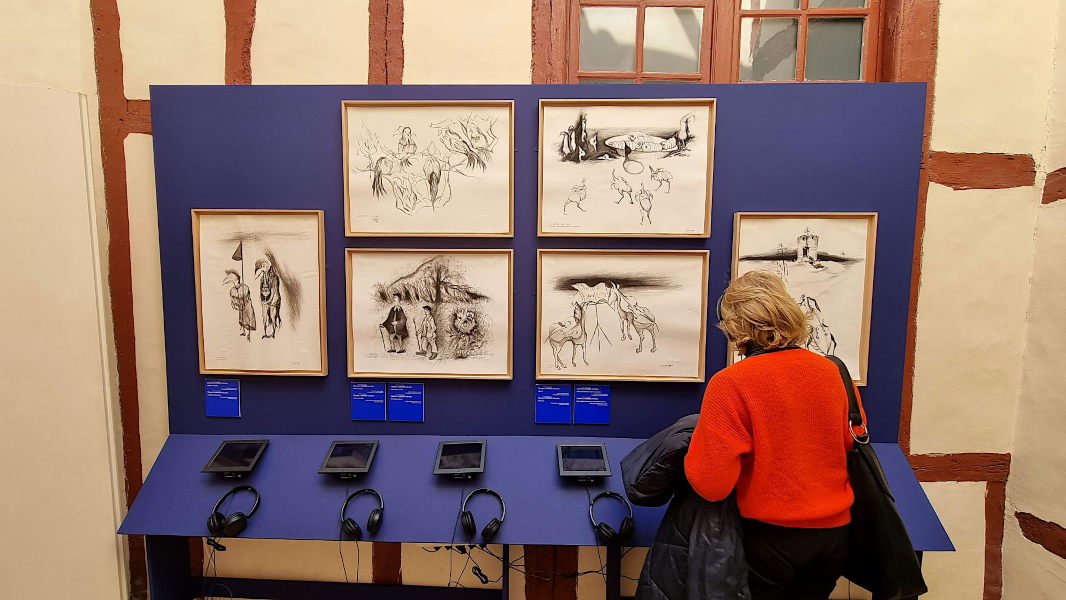
A wink of time…
I end this Focus with the memory of the emotion I felt when, at the beginning of 2022, I took a photo of the kakemono installed on the façade of the Musée Basque et de l’histoire de Bayonne, where Charles Carrère’s name appears at the top of the poster.
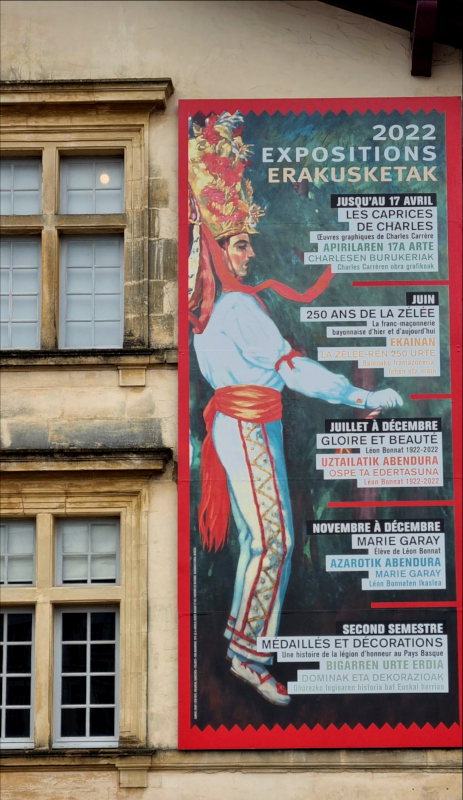
Back to the Focus page
Back to the Home page
This post is also available in: French

